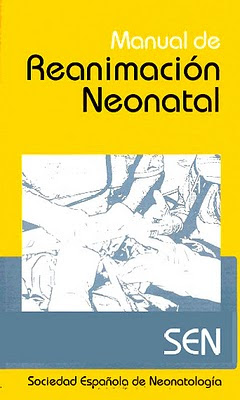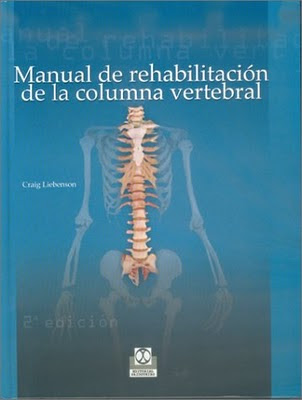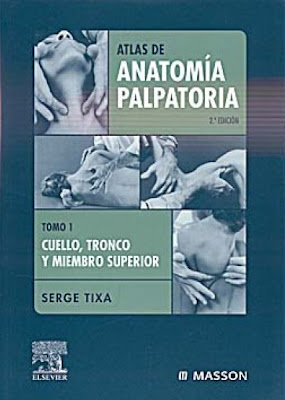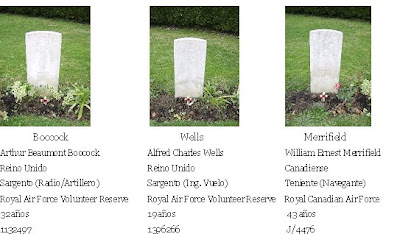
Updating Blogg, I give you 5 new books. and I hope they serve ... Greetings
VIVA CHILE
Download:
http://rapidshare.com/files/419599515/El_Masaje_en_la_Rehabilitaci__n_de_Traumatismos_y_Enfermedades.rar.html






Sunderland MkIII EK572 with section 103-B5 appeared in anti-submarine patrol from Pembroke Dock (Wales) base of the group 19 of the 228 Squadron of the RAF, on the 14:45 he received a message that would support the attack the U-966 on the Galician coast, when he reached the assigned area all they found were the lifeboats for the crew of U-966 and four fishing boats trying to rescue (Virgen de Covadonga, San Francisco, La Concha and San Pedro), made a couple of passes over the area which made several pictures and launched a raft, but that calm hard very quickly, instantly appeared three Junkers Ju 88 aircraft led by Albrecht Bellstdt belonging to 2/Zg1 immediately attacked the lone Sunderland received six attacks in the past, the Bellstdt Albrecht, got the device fell burning from the port side and crashed violently into the water splitting in two to one Stake miles northeast of Bars, were the 18:00 h. The tail of the plane was floating into the estuary Ortigueira, while the San Francisco fishing Barqueiro O was the one who approached the impact zone where he picked up only six bodies recovered from plane, the other six did not knew nothing else.
Of the six bodies recovered could only be identified three, Alfred Wells, Arthur B. Boocock and William F. Merryfield. The chapel for the eleven dead (5 German U-966 and 6 English) had been installed at night in the warehouse of the Fishermen's Association, planted a English flag and a bouquet of flowers on each casket and two wreaths , one for each nationality of the deceased. The next day, about eleven o'clock in the municipal cemetery or funeral Barqueiro acts began in honor of the deceased, were present among others, the German Consul in La Coruña, the addition of the Kriegsmarine in Madrid and the Commander and an officer of U-966.
some time British Airmen were then transferred to the civilian cemetery of La Coruña and then to the British Cemetery in Lujua (Bilbao), but there are only three graves identified not know if the other three are unknown or are individually or in a common grave or mausoleum.

Part of the crew of the EK 572, Boocock is second from right standing
(Boocock Alan)

These are the three sailors buried in Bilbao British Cemetery, the tombstones are the original of each but not read.
The rest of the crew was made up:
F/O.- A. W. Vaughan Franklin - - 160006
Richard McKormick - - 1493486
Joseph Stanley Jarvis - - 1214340 Kames
Frederick Pizacklea
Alistair Williams Aitkin - - 1567438
DJ McCaree
Frank Lawrence - - 1425155
W. Moss
David Edward Nattress - - 1173094

echo Drawing a crew of a Sunderland
In 1934, the British Mail required that all first class mail was sent to overseas travel by air, establishing a grant for the development of intercontinental air transport, similar to U.S. domestic program a decade earlier. In response, the Imperial Airways announced a competition between aircraft manufacturers to design and produce 28 seaplanes, weighing 18 ton unit and range of 1,130 km and a capacity for 24 passengers.
The contract went directly to Short Brothers. Although Short had built flying boats for military and Imperial Airways, none of them was the size and characteristics required. Oswald Short, head of the company, began a crash program to submit a design for a flying more advanced than those previously built.
While the S-23 was still in development, the British Air Ministry specification issued in 1933 "R.2/33", which required a seaplane new generation ocean surveys, with four engines may be monoplane or biplane. This version is called S.25 and was presented to the Air Ministry in 1934.
The Short S.25 Sunderland was a flying boat developed for the Royal Air Force by the British manufacturer Short Brothers of Rochester, England. First flew on October 16, 1937 piloted by chief test pilot of Short, John Lankester Parker. In part based on the S-23 seaplane Empire, Empire insignia Airways, the S.25 was extensively modified for military use. It was one of the most powerful and seaplanes used during World War II, and was used to counter the threat of German submarines at the Battle of the Atlantic. Takes its name from a village in northeastern England.
The S.25 shared many traits in common with the S-23. High-wing monoplane of metal construction, the fuselage contained two decks with 6 compartments on the lower deck. It was equipped with flaps patented down Gouge also moved back, increasing the wing area and providing a 30% rise in landing. The crew was initially set at 7 but in later versions was 11 or older.
The specification required an offensive weapon in a 37 mm cannon and 900 kg of bombs, mines or (possibly) depth charges. This charge was stored in the fuselage and was extracted by rail under the center wing section, opening a gate on each side of the pump room. Defensive armament included a mechanized turret Nash & Thomson FN-13 with four 7x7 mm Browning machine guns. at the end of the tail, and a 7x7 mm Browning. on each side of the fuselage. In later versions added a turret with two guns mounted dorsally at the top of the fuselage, bringing total to 18 guns, more than any other aircraft during the war.

The production of the Mark III quickly began in December 1941, shows a revised hull configuration was tested on a Mark I in June. This change improved the seaworthiness, which had worsened with the increasing weight of Sunderland.
The Mark III proved to be the best variant of Sunderland, with 461 units built. Most were built by Short factories in Rochester and Belfast, another 35 at a new factory (albeit temporary) in White Cross Bay on Lake Windermere, while 170 units were built by Blackburn Aircraft. The Sunderland Mark III proved to be one of the most important weapons of Coastal Command, in conjunction with the Catalina.
As the submarine began using passive recipients Metox which detected the radar signal that ASV MkII equipped the Sunderland, the number of sightings decreased drastically. The RAF response was to update the radar ASV MkIII version, operating in the range of 50 cm. During the operating time of the MkIII, several improvements were added four more machine guns in a fixed position in front of the fuselage just behind the turret , another change was that by passing patrols of the 14 hours pass 500 rounds of ammunition per weapon to 1,000 rounds of ammunition.
As radar detection of submarines became more effective, there were more night patrols to hunt submarines in the area when they came to your batteries. Attacking in the dark, was a problem that was solved by the use of flares released electrically by the stern of the plane that gave enough light.
At that time the workload of the crew had increased so much that needed at least 10 crew. In early 1944, the load of explosives on the plane, the length of the patrols and the fuel load required more power and proceeded to change the engine for a P & R1830-90B W 1200-cv. also that they were also influenced and used by other Catalina, Liberator and thereby Dakota, for maintenance services was an advantage because they were familiar with them. This led to the production of aircraft MKV.
Crew: 8 to 11
(Two pilots, radio operator, navigator, engineer, weapons operator, three to five gunners)
Length: 26 m
Wingspan:
Height: 10 m
Wing area: 138 m²
Empty weight: 15,663 kg
Weight loaded: 26,332 kg
Powerplant: 4 × 9-cylinder radial engine Bristol Pegasus XVIII, 794 kW each.
maximum speed : 336 km / h
Cruising Speed \u200b\u200b : 285 km / h
Speed \u200b\u200b Lost: 125 km / h
Range: 2,848 km
Service ceiling 4,880 m
Weapons:
16 × 7.7 mm Browning machine gun
2 Browning machine gun of 12.7 × mm
Pumps: could carry several types, bombs, mines and depth charges, for a total of 900 kgs.



Until 1926 was a major shipyard of the Royal Navy and was located on the coast of Wales, in 1931 installed the 210 of the RAF squadron equipped with seaplanes Southampton II. Dura nte nearly 30 years, Royal Air Force used these facilities . During 1943, became the basis of the armies of the Sunderland and was the largest operational base for seaplanes in the world. In 1943 at least 99 were permanently stationed there seaplanes between Sunderland and Catalina
Given its importance as an RAF base, it was no surprise that during War based global Pembroke Dock was the subject of several attacks by the Luftwaffe .
After the war the city enjoyed a degree of prosperity, which, however, changed in 1957 when it was announced that the RAF would drastically reduce their presence.
Squadrons based in Pembroke Dock:
119 - RAF - Sunderland
201 - RAF - Sunderland
209 - RAF - Catalina
210 - RAF - Sunderland and Catalina
228 - RAF - Sunderland
230 - RAF
240 - RAF – Catalina
320 - RAF
461 – RAAF – Sunderland
422 – RCAF – Sunderland
VP-63 – USN – PBY5 Catalina

Sources:
HARASSED LOBOS - Jose Antonio Tojo Ramallo
RED TIDE, BLACK TIDE - Juan Carlos Salgado